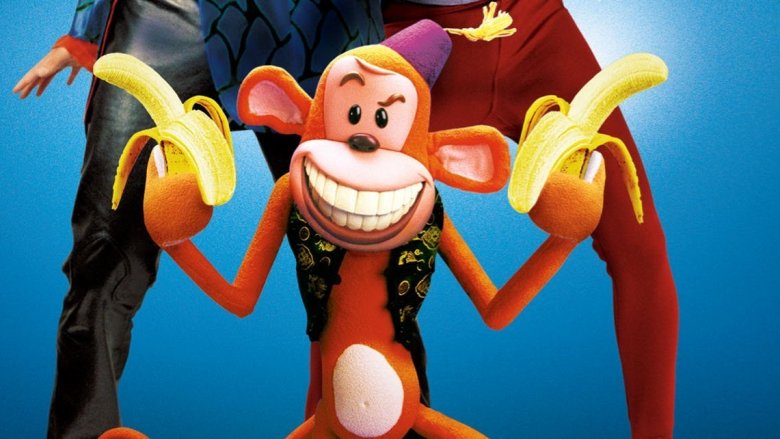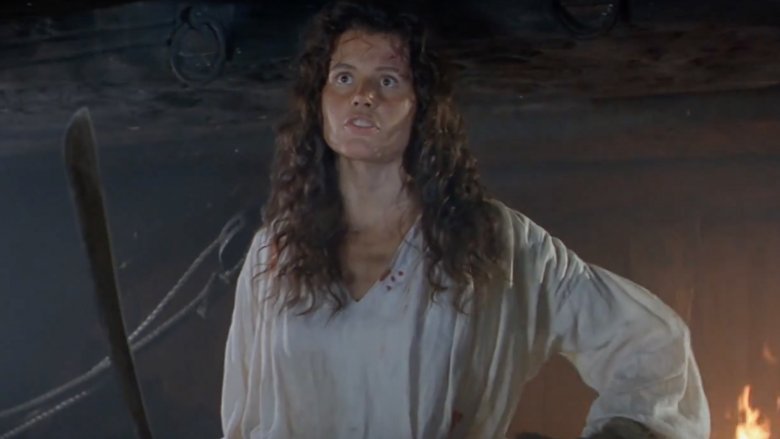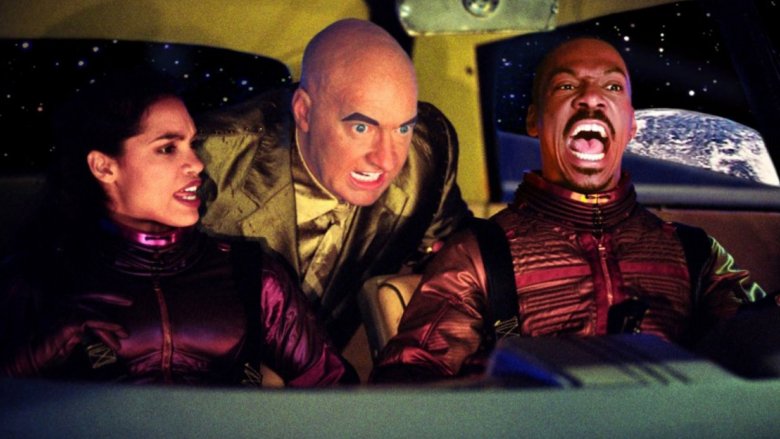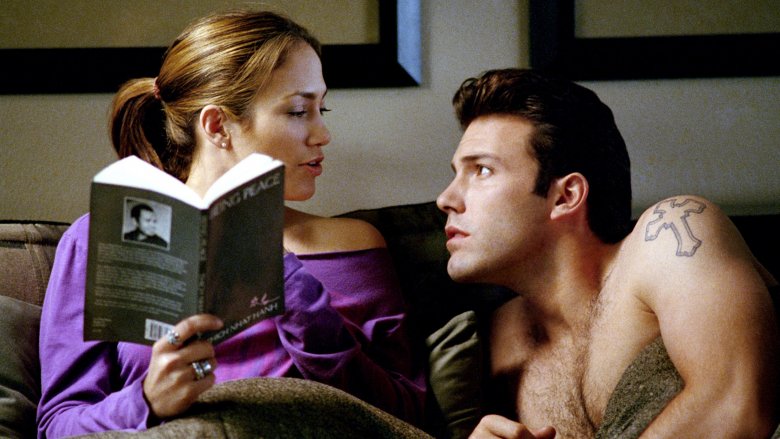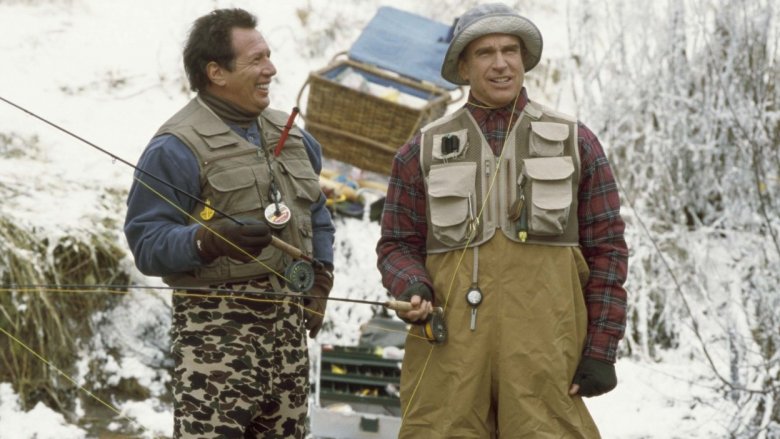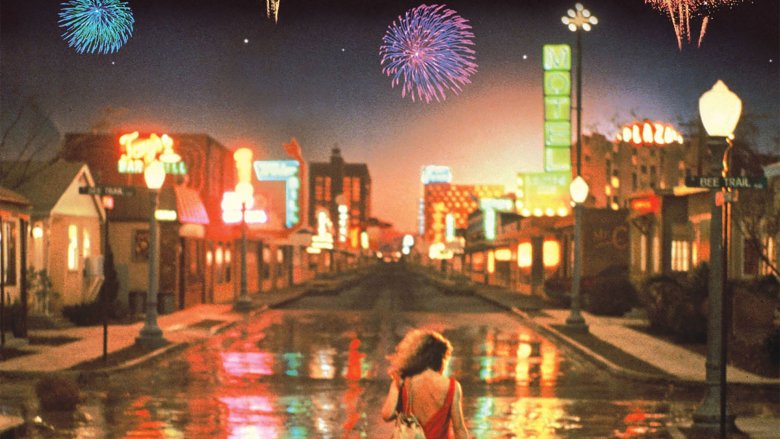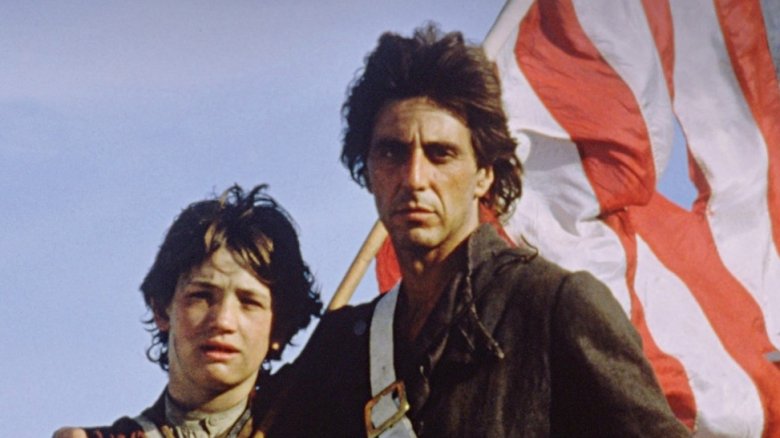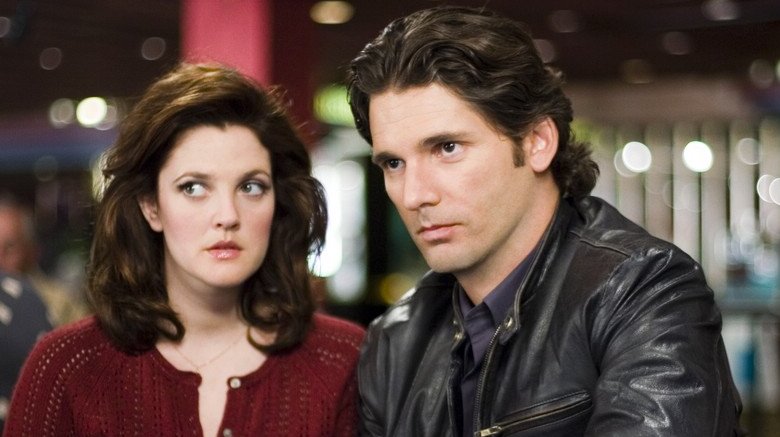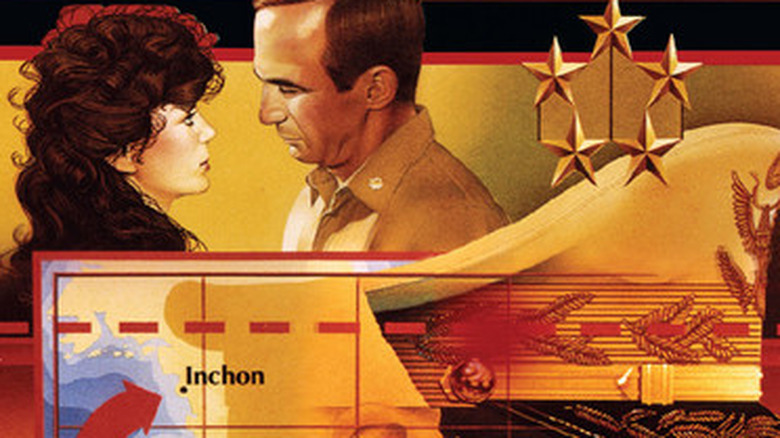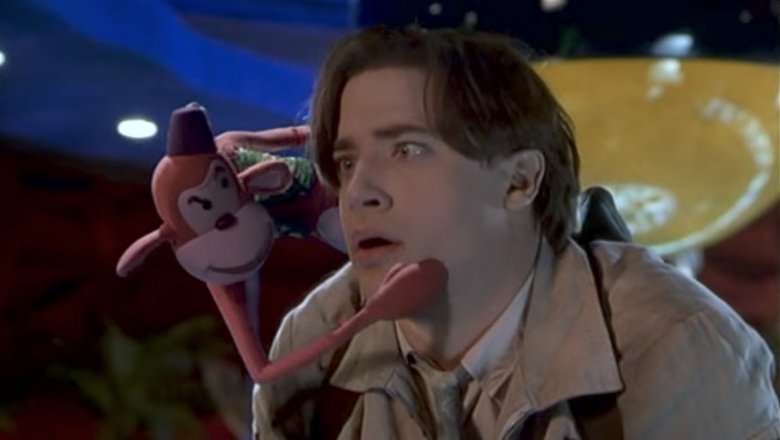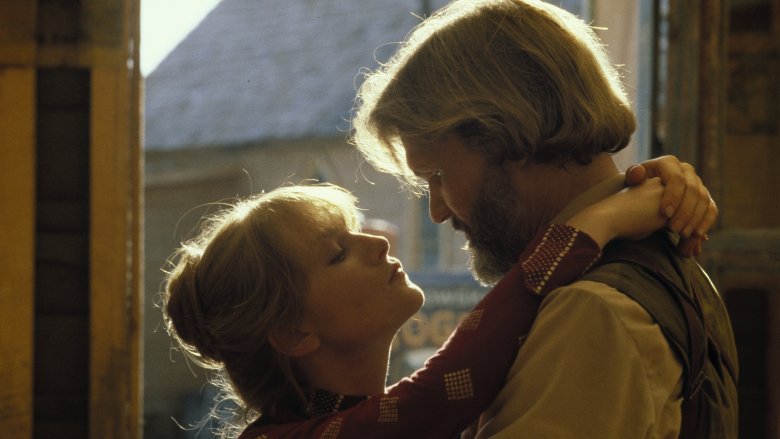Big Budget Movies That Made Less Than $15 Million
"You've got to spend money to make money"—it's an old adage that seems to drive the movie industry. Most major movies have huge budgets, because A-list actors, sets, costumes, props, and special effects all require lots of cash. But hey, why worry about price tags in the pursuit of art...or commerce? Filmmakers might spend a ton of money on a movie, but it'll make back millions more. That's always the plan, anyway—but it isn't always the case. Here's a look at some big-budget movies that were almost totally rejected by North American audiences.
Cutthroat Island (1995)
Making a pirate movie that looks good is going to be expensive—doubloons, swords, shoulder monkeys, and elaborate ships with lots of rigs don't come cheap, and neither does top talent. For the sweeping pirate adventure Cutthroat Island, Carolco Pictures tapped Renny Harlin, a proven action director just coming off hits Die Hard 2: Die Harder and Cliffhanger. Harlin's pick to star: Academy Award winner Geena Davis.
Davis and Harlin were married at the time, so it wasn't hard to tell why he might want to build a starring vehicle around her. On the other hand, Davis wasn't an action star—she was known for eccentric comedies and dramas, like Beetlejuice and The Accidental Tourist. Another factor working against the movie: Pirate movies hadn't been successful in Hollywood for decades. With the exception of the Peter Pan-inspired Hook, buccaneer-based movies made in the years before Cutthroat Island—including The Island, The Pirate Movie, Yellowbeard, Pirates, The Pirates of Penzance—sank quickly.
At least the $98 million spent to make the film showed up onscreen—Cutthroat Island looks beautiful, although critics didn't think it was particularly good. Already in financial trouble before shooting on Cutthroat Island began, Carolco was pushed so far into the red by the film's expenses that the company filed for bankruptcy in late 1995. Cutthroat Island's paltry $10 million box office take didn't help.
The Adventures of Pluto Nash (2002)
Sometimes mixing two movie genres works. "Action" and "comedy" blended nicely in Lethal Weapon and Rush Hour, for example. Combining "gangster movie," "science fiction," and "comedy"? Not so much. Set in the year 2080, The Adventures of Pluto Nash starred Eddie Murphy as the title character, an ex-smuggler who gets out of prison and buys a mob-connected nightclub...on the moon, where he's assisted by an obsolete android played by Randy Quaid.
The screenplay bounced around Hollywood for more than a decade before finally being produced in 2000, and then it sat on the studio shelf. Warner Bros. finally released it late in the summer of 2002—only to see it pull in a paltry $4.4 million at the domestic box office, which didn't quite cover the film's staggering budget of $100 million.
Gigli (2003)
Gigli is a punchline in film history, synonymous with "flop." And for good reason—it's a strange movie, but not in a good way. For starters, it's got a title that isn't immediately pronounceable (it's "jee-lee" not "jig-lee"), and a plot that's somewhere between nonsensical and offensive.
Ben Affleck plays a thug (that's our Gigli) tasked by his criminal bosses to intimidate a federal prosecutor by kidnapping her developmentally disabled brother (Justin Bartha). Things don't go as planned, so the crime bosses send in Ricki (Jennifer Lopez), another gangster, to help him. Gigli winds up falling in love with her, even though he seemingly doesn't have a chance because she's gay.
Nothing about Gigli seemed terribly promising on paper, but it earned extra attention when its stars wound up in a tabloid-ready relationship, ultimately amplifying the negative pre-release buzz. When it arrived in theaters in August 2003, critics were ready to pounce. "Put together enough pointless, random details, and you get Gigli, a movie that's less incompetent than bewildering," wrote Mark Caro of the Chicago Tribune. Against a reported $54 million production budget, The film took in a hair over $6 million and was pulled from movie theaters after three weeks.
Town & Country (2001)
Town & Country wasn't supposed to be a very elaborate movie—just a standard romantic comedy aimed at an older, upscale audience—yet it took three years and the budget of a summer sci-fi blockbuster to get to the cineplex.
Warren Beatty starred as a wealthy architect, married for 25 years to a cool interior designer (Diane Keaton), who was also having an affair with a younger woman (Nastassja Kinski). The couple's friends (Garry Shandling and Goldie Hawn) are caught up in their own infidelity mess, and further relationship hijinks ensue when the action switches from New York (town) to Sun Valley (country). Town & Country 's projected budget of $44 million included $10 million for Beatty, who reportedly was such a perfectionist that his demand for endless retakes stretched out the film's shoot. Also delaying things and running up the costs: several of the film's stars weren't happy with the screenplay, and brought in their own script doctors to punch it up while the movie was in production.
The film's 60-day schedule in 1998 came and went; the production reconvened in 1999 for reshoots, and after test screening audiences didn't like the movie, more reshoots followed in 2000. Total cost of Town & Country: $90 million. Total domestic box office take of Town & Country, upon its release in spring 2001: just under $7 million.
One from the Heart (1982)
Francis Ford Coppola is one of the most successful American filmmakers of all time. In the '70s, he made a slew of undeniable classics, directing The Godfather, The Godfather Part II, The Conversation, and The Godfather Part II. His first real misstep came with his first movie of the 1980s: One from the Heart.
It was ostensibly a blue-collar romantic comedy set entirely in Las Vegas—at least until Coppola's instinct to push the envelope kicked in. To better tell the story of a couple who gets a five-year-itch and spends the night with other people, Coppola wanted to film to look purposely artificial or impressionistic, so he shot it on sound stages with painted backgrounds and constructed sets rather than shooting on location. For the movie's climactic "don't get on that plane, I love you!" scene, Coppola ordered a replica of Las Vegas's McCarran Airport built, along with a runway and a plane. (He also utilized experimental techniques, such as blending film and video.)
Coppola's gambit wound up costing $27 million, more than double the film's initial budget, and when One from the Heart was released in 1982, reviews were mixed. Roger Ebert said it best: "One from the Heart is an interesting production but not a good movie." Audiences were more decisive in their assessment: One from the Heart's box office run amounted to a paltry take of about $637,000.
Revolution (1985)
On paper, Revolution sounds like an undeniable hit. Hugh Hudson, coming off back-to-back critical and commercial hits Chariots of Fire and Greystoke: The Legend of Tarzan, Lord of the Apes, directed this epic war movie about the Revolutionary War as told through the eyes of Tom Dobb, a reluctant-to-fight New York state fur trapper, played by Al Pacino, who goes all in on fighting the British when British troops kidnap his son.
Oddly enough, this movie about the American fight for freedom was produced by British studio Goldcrest, and filmed in the English countryside. Still, the company poured $28 million into Revolution, making it one of most expensive movies of 1985, joining the likes of Rambo: First Blood Part II and A View to a Kill. Unlike those films, however, Revolution was a massive box office flop—it earned just $358,574 in the U.S.
Lucky You (2007)
The mid-2000s poker craze begat a few poker movies, such as this 2007 drama about a second-generation card shark looking to compete in the World Series of Poker. Lucky You boasted an impressive lineup—it starred Eric Bana, Drew Barrymore, and Robert Duvall, and was directed by Academy Award nominee Curtis Hanson (L.A. Confidential) who co-wrote the script with Academy Award winner Eric Roth (Forrest Gump).
Perhaps it's that level of top-notch talent that ran the budget of a simple, low-key movie up to approximately $55 million. But that roster didn't attract big audiences—Lucky You pulled in just $5.7 million at the domestic box office, a lukewarm reception that certainly wasn't helped by the negative reviews from critics like Rex Reed of the New York Observer, who argued that it "doesn't have enough energy to keep the most catatonic tournament-poker addict awake."
Inchon (1982)
Inchon is an epic war movie about the Battle of Inchon, a crucial fight in the Korean War and a decisive victory for troops under the command of General Douglas MacArthur. Heading up and financing the production: the Rev. Sun Myung Moon, leader of the Unification Church, which has frequently been identified as a cult. Prominently listed in the credits as a "Special Advisor on Korean Matters," Moon contributed $30 million of his church's money to the film's $40 to $50 million budget; most of the rest was provided by Japanese newspaper publisher Mitsuharu Ishii, a member of Moon's church.
Moon spared no expense. The movie filmed around the world, and he paid past-his-prime acting legend Laurence Olivier $1 million to portray General Douglas MacArthur. Inchon screened at the 1982 Cannes Film Festival and later on, MGM/UA agreed to distribute it, bringing the film to theaters (with its running time cut from 140 minutes to 105) in September 1982. Critics loathed it; Vincent Canby of the New York Times said it "looks like the most expensive B-movie ever made." Audiences weren't interested either. Inchon's gross: $5.2 million.
Monkeybone (2001)
Well, Monkeybone was certainly original. It's about a cartoonist (Brendan Fraser) who, while in a coma, travels to a dark fantasy land called Down Town where he must defeat both Death (Whoopi Goldberg) and Monkeybone (voiced by John Turturro), an evil cartoon of his own creation.
Mixing live action and animation is a technically demanding and subsequently expensive task, and under director Henry Selick, later known for acclaimed stop-motion animated efforts like The Nightmare Before Christmas and James and the Giant Peach, Monkeybone ran up a tab of $75 million. Unfortunately, 20th Century Fox had no idea what to do with the movie.
Executives relieved Selick of his duties after a terrible test screening to recut it; executive producer Chris Columbus also oversaw another edit to make it more palatable to audiences. All the while, the release date was changed so often that filmmakers only had two weeks before its March 2001 opening to mount an advertising campaign. The end result for Monkeybone: domestic revenues of just over $5 million.
Heaven's Gate (1980)
Michael Cimino's second directorial effort, 1978's The Deer Hunter, won the Academy Award for Best Picture and a Best Director trophy for Cimino. The filmmaker was hailed as a serious new talent, and Cimino had enough clout to pick his next project. It ended up being Heaven's Gate, a movie about a 19th century historical footnote called the Johnson County War, in which immigrant settlers challenged the power of local cattle ranchers and paid for it with their lives.
But that was just the heart of the movie. CImino, who'd written his first draft of a script in 1971 only to have it rejected, envisioned a sweeping saga about the history of America itself, with sequences about bordellos, baseball, roller skating rinks, college graduation ceremonies, and more, all of them rendered in loving and exacting detail. After the first six days of shooting in April 1979, Heaven's Gate was already five days behind schedule; Cimino had spent nearly $1 million for about 90 seconds of usable footage. It was already evident Heaven's Gate was going to miss its projected Christmas 1979 release and go over its $7.5 million budget.
When Cimino turned in his five-hour-plus cut of Heaven's Gate a year later, he'd spent somewhere around $40 million. Necessarily cut down for release, the film perplexed critics (Variety argued that it "fails to work at almost every level") and repelled moviegoers. It made just $3.4 million, and Cimino wouldn't release another movie for five years.
